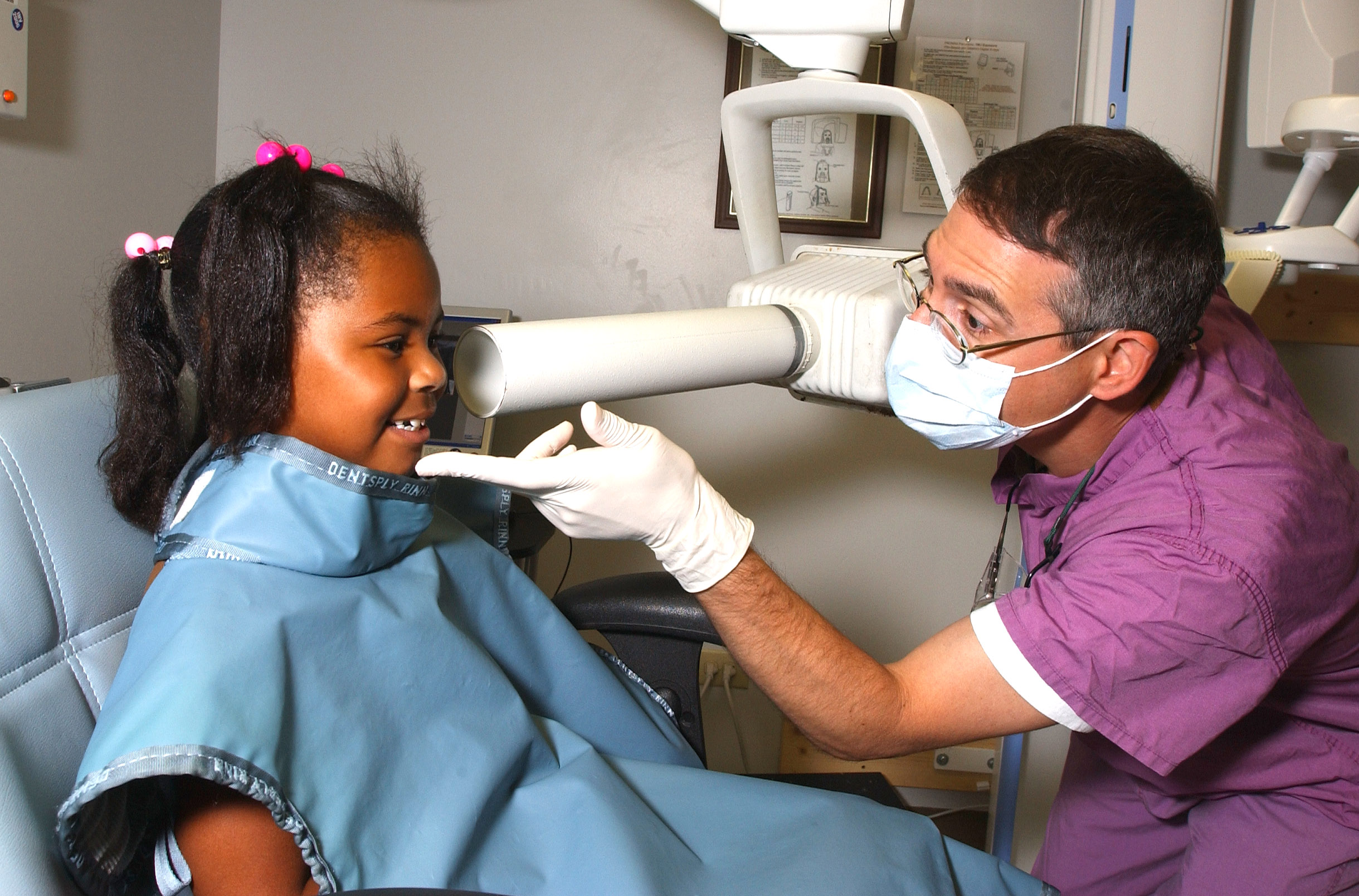
Maj. David Kieser prepares to take dental X-rays of Deaveyon Moore during a Dunn Dental Clinic pediatric appointment Sept. 18 at Lackland Air Force Base, Texas. Major Kieser is a Pediatric Dental Course residents from Scott Air Force Base, Ill. Deaveyon is daughter of Staff Sgt. T'wanna Moore, a 59th Dental Squadron dental technician from Lackland AFB. (U.S. Air Force photo/Master Sgt. Kimberly Spencer)
Dental x-rays are specialized radiographic images that are used to visualize the teeth, bones, and surrounding structures in the mouth. These images are taken using a small amount of radiation and are an important tool in the diagnosis and treatment of dental conditions. There are several types of dental x-rays, including bitewing, periapical, panoramic, cephalometric, and 3D cone beam computed tomography (CBCT). Dental x-rays allow dentists to identify problems such as decay, abscesses, cysts, and impacted teeth, and to develop treatment plans to address these issues. They are an essential part of dental care and are considered safe when used appropriately.
Dental x-rays are important tools that allow dentists to diagnose and treat a variety of dental conditions. They provide detailed images of the teeth, bones, and surrounding structures in the mouth that cannot be seen with the naked eye. Without x-rays, many dental problems would go undetected until they had progressed to a more serious stage, which could result in more extensive and costly treatments. X-rays can detect issues such as decay, abscesses, cysts, and impacted teeth in the early stages, allowing for prompt and effective treatment. They are also useful in evaluating the position of unerupted teeth and planning for orthodontic treatment. In short, dental x-rays are an essential part of preventive dental care and are necessary for maintaining good oral health.X-rays allow dentists to identify problems such as decay, abscesses, cysts, and impacted teeth in the early stages, when they are easiest to treat.
There are several types of dental x-rays that are used to visualize the teeth and surrounding structures. These x-rays are important tools that allow dentists to diagnose and treat a variety of dental conditions. Dental x-rays are usually taken at regular intervals as part of a preventive care program, but they may also be taken on an as-needed basis to diagnose and treat specific dental problems. It is important to discuss any concerns about radiation exposure with a dentist, as the benefits of x-rays in diagnosing and treating dental conditions generally outweigh the potential risks.
- Bitewing x-rays: These x-rays show the upper and lower teeth in a single jaw on one film. They are used to diagnose decay between the teeth and to evaluate the bone level around the teeth.
- Periapical x-rays: These x-rays show an entire tooth, from the crown to the root, and the surrounding bone. They are used to diagnose problems with the root or surrounding bone, such as abscesses or cysts.
- Panoramic x-rays: These x-rays show a broad view of the entire mouth, including all the teeth, the jawbone, and the surrounding structures. They are used to evaluate the position of unerupted teeth, identify growths or abnormalities, and plan for orthodontic treatment.
- Cephalometric x-rays: These x-rays show a side view of the head and are used to evaluate the size and position of the jaw and teeth. They are often used in conjunction with panoramic x-rays in orthodontic treatment planning.
- 3D cone beam computed tomography (CBCT): This type of x-ray uses advanced technology to create a detailed 3D image of the teeth, jaw, and surrounding structures. It is often used in cases where traditional x-rays are not sufficient, such as when evaluating the position of impacted teeth or planning for complex dental procedures.
It is important to note that all types of x-rays use low levels of radiation and are considered safe when used appropriately. The benefits of x-rays in diagnosing and treating dental conditions outweigh the potential risks.




